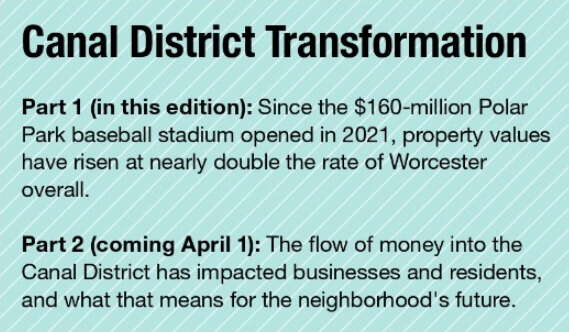
Canal District Transformation, part 1: The rising value of the neighborhood
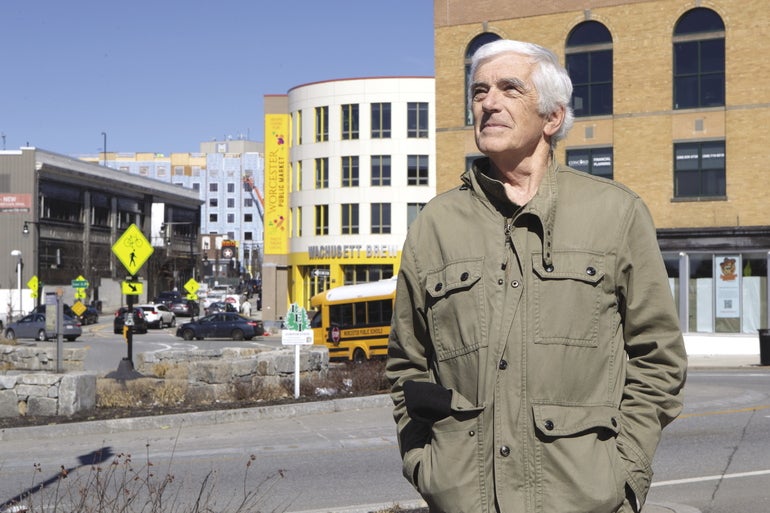 Photo | Matt Wright
Allen Fletcher stands on Kelley Square, which was remade in the wake of the Polar Park announcement, with his Worcester Public Market in the background, along with The Cove under-construction housing development (in blue).
Photo | Matt Wright
Allen Fletcher stands on Kelley Square, which was remade in the wake of the Polar Park announcement, with his Worcester Public Market in the background, along with The Cove under-construction housing development (in blue).
More Information
The Canal District in Worcester has seen a number of transformations in its storied history: from its namesake canal designed as an artery of commerce, later paved over after the rise of the locomotive; to the growth of highways and suburbs, which drained the neighborhood of its immigrant-run shops.
By the time the current wave of developers started coming in, the neighborhood was a hub for wholesale businesses – and little else, said Allen Fletcher, one of the founders of the Canal District Alliance.
“It wasn’t nothing, but it wasn’t much,” Fletcher said. “Nothing exciting in terms of a district, but that’s what I walked into.”
The efforts by Fletcher and others like plumber-turned-developer Dino Lorusso attracted the attention of an eclectic mix of small-business entrepreneurs and created a funky urban neighborhood, which eventually caught the eye of the Pawtucket Red Sox.

In 2018, the team announced its intention to move into the Canal District. That kicked off plans by the City of Worcester for another economic transformation of the neighborhood, initially envisioned as a $240-million public-private project with hotels, residences, and retail all centered around what eventually turned into the most expensive minor league baseball stadium ever built.
Since the publicly owned Polar Park stadium opened in 2021, the value of the Canal District has risen at more than double the rate of the city, according to a WBJ analysis of more than 200 properties within the district.
“I’m very bullish on the Canal District, even in the face of some recent troubles,” said Will Kelleher, principal of Worcester real estate firm Kelleher Sadowsky, who represents some property owners in the Canal District. “As residents move into the new developments, retail will likely follow to support the residents in the area.”
An 83% increase in values
WBJ tracked from 2021 to 2024 the assessed property values of the 204 parcels comprising the 92.25-acre district, using data from the City of Worcester property assessor. The exact neighborhood borders are nebulous, so WBJ used the railroad tracks, Union Station, and I-290 as western, northern, and eastern borders while Hermon, Lamartine, and Washington streets, along with a portion of Lafayette Street between Washington and Milbury streets, for the southern border.
That research found the assessed value of the Canal District properties – not counting the Polar Park parcel itself – rose from a combined $87.41 million in 2021 to $159.95 million in 2024.
That 83% increase is more than double the 41.3% increase seen across the entire city over the same time, according to data from the City of Worcester assessor.
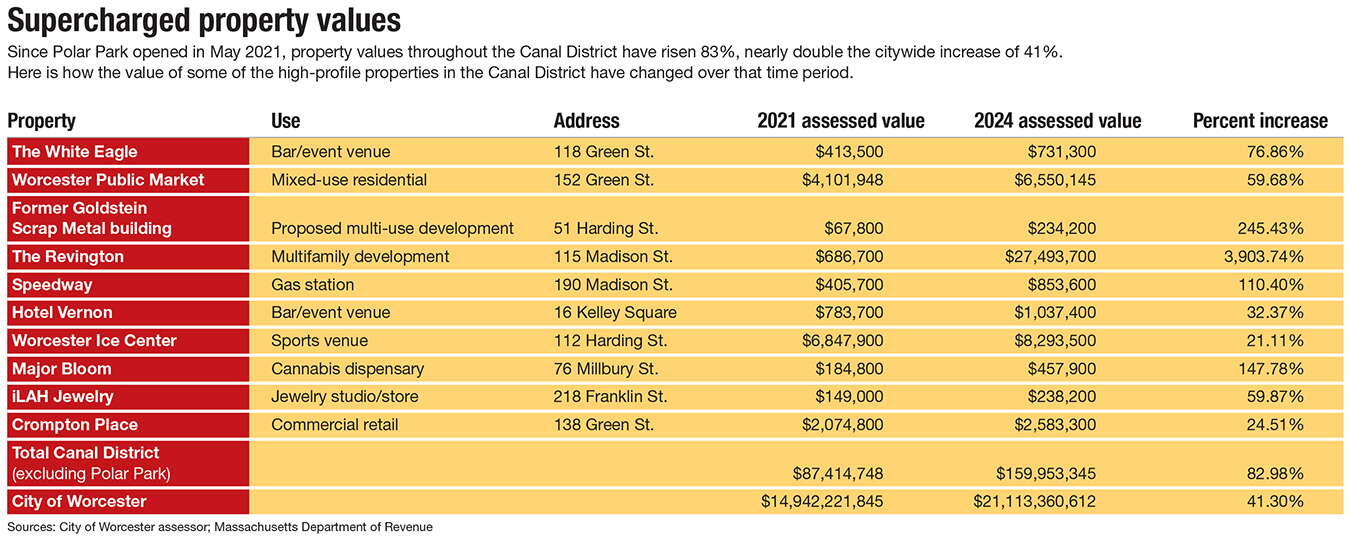
“The Canal District is a critical piece to the City’s economic development agenda and the city’s vibrancy as a whole. It’s exemplary of the best practices you want to see as it relates to urban design and infrastructure,” Peter Dunn, chief development officer for the City’s Executive Office of Economic Development, said in an email to WBJ. “Thankfully, many historic buildings with their unique character have been preserved, the zoning facilitates a mix of business and residential uses, and the infrastructure supports walkability.”
Interest in purchasing Canal District real estate has spiked 72%. In the 5.5 years since the 2018 WooSox announcement, the neighborhood had 86 property sales, compared to 50 sales in the 5.5 years before the announcement, according to City property records.
And the sales prices for those real estate transactions have risen drastically: the total sales volume from August 2018 to February 2024 was $24.3 million, an increase of 183% compared to the 5.5 years before, according to data from real estate information provider CoStar. That far outpaced the 55% increase citywide and the 42% increase throughout Massachusetts.

Large-scale development fits & starts
The 83% increase in Canal District property values doesn’t account for the impact of the Polar Park parcel, which went from an empty lot to hosting a $160-million baseball stadium. From January 2021, when the stadium was still under construction, the City of Worcester’s assessed value of the property rose from $13.1 million to $146 million in 2024. WBJ didn’t include this property in its main calculation because it wanted to evaluate the project’s impact on surrounding properties.
If the Polar Park parcel was included in the overall Canal District value calculation, the percent increase in value wouldn’t be 83% – it would be 204%.
Polar Park was only part of the City of Worcester’s public-private economic development plans. In 2018, the City partnered with Boston developer Madison Properties for what was supposed to be an additional $140 million in private investment for two hotels, two multifamily developments, an office building, and a life sciences building.
All the Madison developments have been significantly delayed. The one near fruition is a 228-unit multifamily development now branded at The Revington.
The Revington shows how new developments are influencing the rise in Canal District property values. In 2021 when it was largely an empty lot, 115 Madison St. was assessed at $686,700. With the complex now constructed, its assessed value was $27.5 million in 2024.
Other developers proposed multifamily and mixed-use projects in the Canal District, although only one is near completion: The Cove, a 173-unit complex from Worcester-based V10 Development. That project at 99 Green St. is under construction, so its assessed property value is down, largely due to the demolition of the original building: from $313,000 in 2021 to $306,000 in 2024.
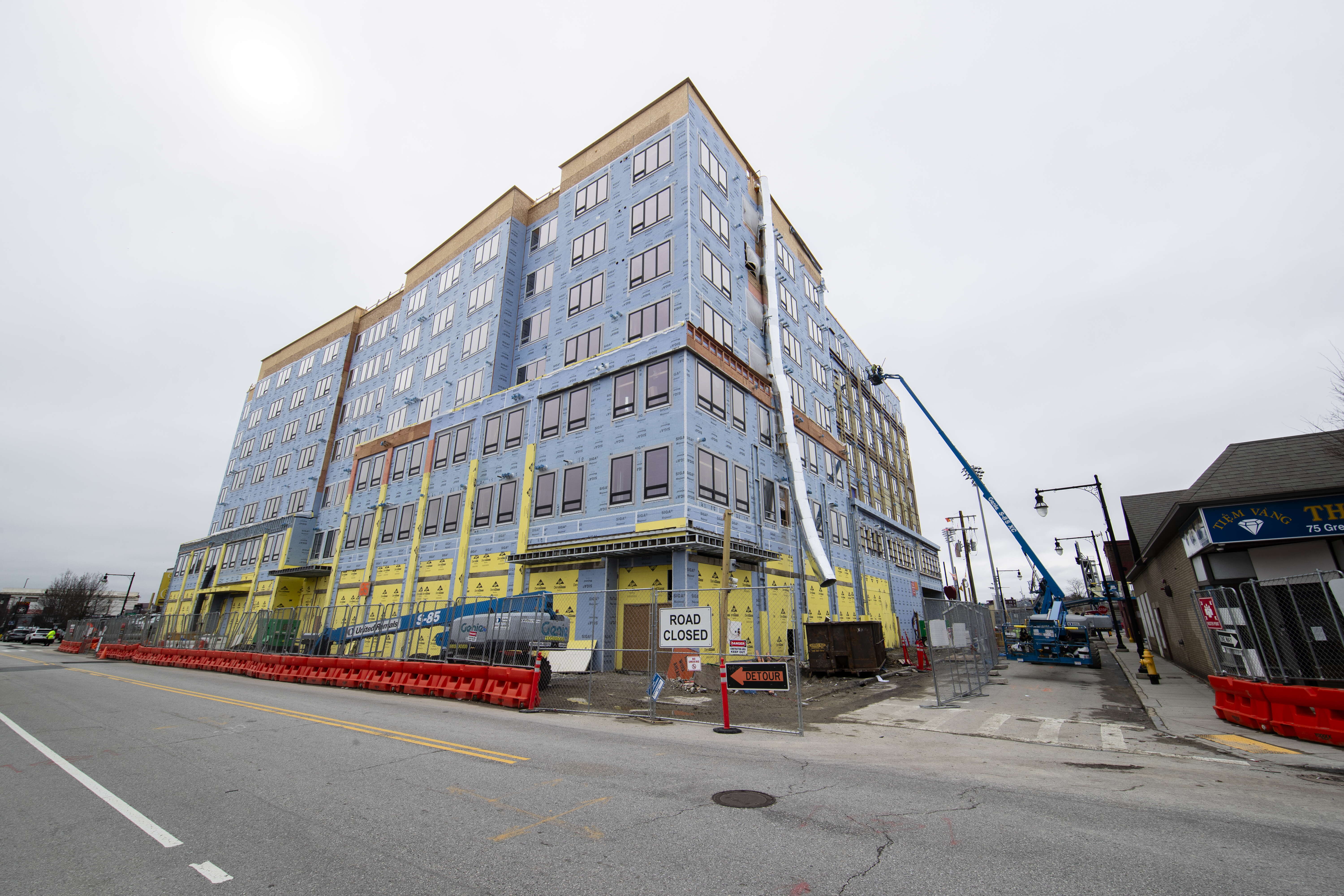
Other developments proposed in the wake of the Polar Park announcement are facing delays. In January, Quarterra Multifamily Communities, the North Carolina developer behind the 375-apartment proposal near the former site of the Table Talk Pies factory on Kelley Square, requested an extension of site plan approvals until February 2026, citing troubles with financing.
A 105-apartment complex proposed for the former site of the Fairway Beef meat shop by Boston-based AKROS Development in February requested an extension, citing money, labor, and supply chain problems, along with a slowdown in the commercial real estate market.
“The [Polar] Park is a double-edged sword. It was great for anybody who owned property down there because they cashed out at a super premium, especially right after the [WooSox] announcement,” said Jimmy Kalogeropoulos of RE/MAX Partners - Advance Group in Worcester, a real estate agent who frequently deals with transactions involving the Canal District. “But I think the writing's on the wall. [Former WooSox principal owner] Lucchino couldn’t sell the team fast enough. I don’t think the park is going to be a success in the long term.”
Rising value, before Polar Park
New development was already happening in the Canal District before the PawSox 2018 announcement. Fletcher invested $21 million into the former dirt parking lot at 152 Green St. he bought in 2014 for $900,000, to create the mixed-use Kelley Square Lofts and Worcester Public Market opened in 2020. Its assessed value rose from $4.1 million in 2021 to $6.6 million in 2024.
The impact of these and other pre-Polar Park developments are clear from the archives of Google Street View images of the Canal District dating back to 2007. Images of the area from the time depict block upon block of boarded-up buildings and empty lots, with Dumpsters often outnumbering visible pedestrians.
A major turning point in the Canal District’s post-2007 transformation was the purchase by Lorusso, the plumber turned developer, of the Crompton Loom Works building at 138 Green St. in April of that year.
“The first day I was just cleaning up the building, deciding what to do. I realized this neighborhood emptied out at seven o’clock,” said Lorusso. “So I thought mixed-use was something that would work for the area.”
After Lorusso fixed the building, Amy Chase opened her homegoods store Crompton Collective there in 2012. The collective, alongside BirchTree Bread Co. in 2014, quickly began attracting customers, Fletcher said.
Yet, the neighborhood remains in transition. High-profile Canal District businesses have closed for a variety of reasons, including The Dive Bar in 2019, Smokestack Urban Barbecue in 2022, and Maker to Main in January of this year. The neighborhood still attracts new small-business entrepreneurs, including IIlah Cibis from iLAH Jewelry. After operating a Sudbury jewelry studio for 16 years, Cibis opened a whimsical jewelry store on Franklin Street in a former auto garage.

Despite being a wealthy town, Sudbury lacked a younger, more energetic population who were looking for her custom engagement rings or one-of-a-kind handmade pieces. She figured those customers would be in the Canal District.
“There’s just more movement, whereas people in the suburbs tend to stay where they are,” Cibis said. “There were a lot of factors involved, but I wanted to make pieces for younger people.”



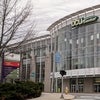

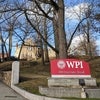



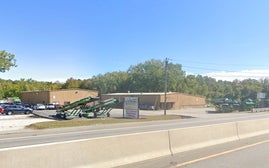



0 Comments